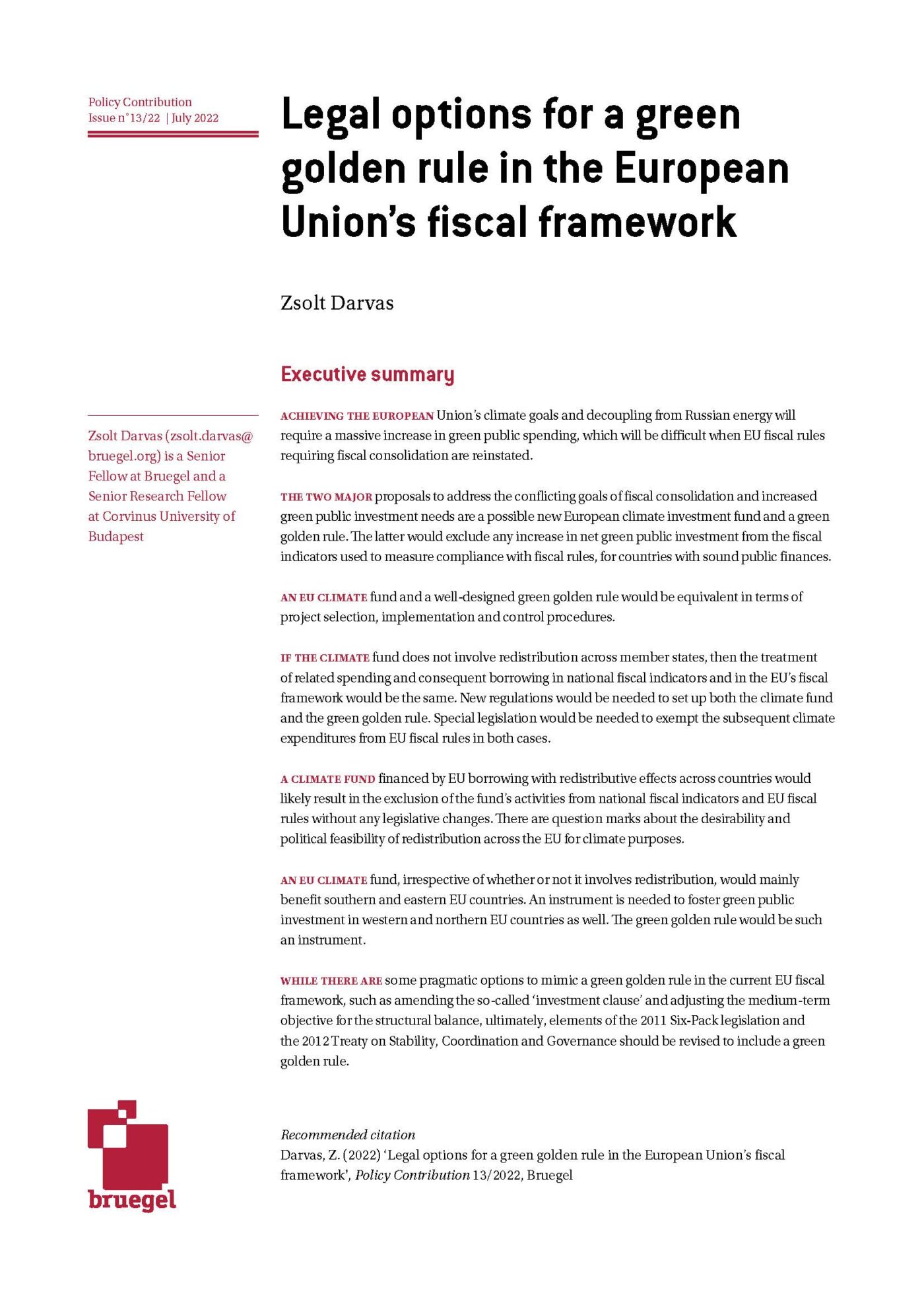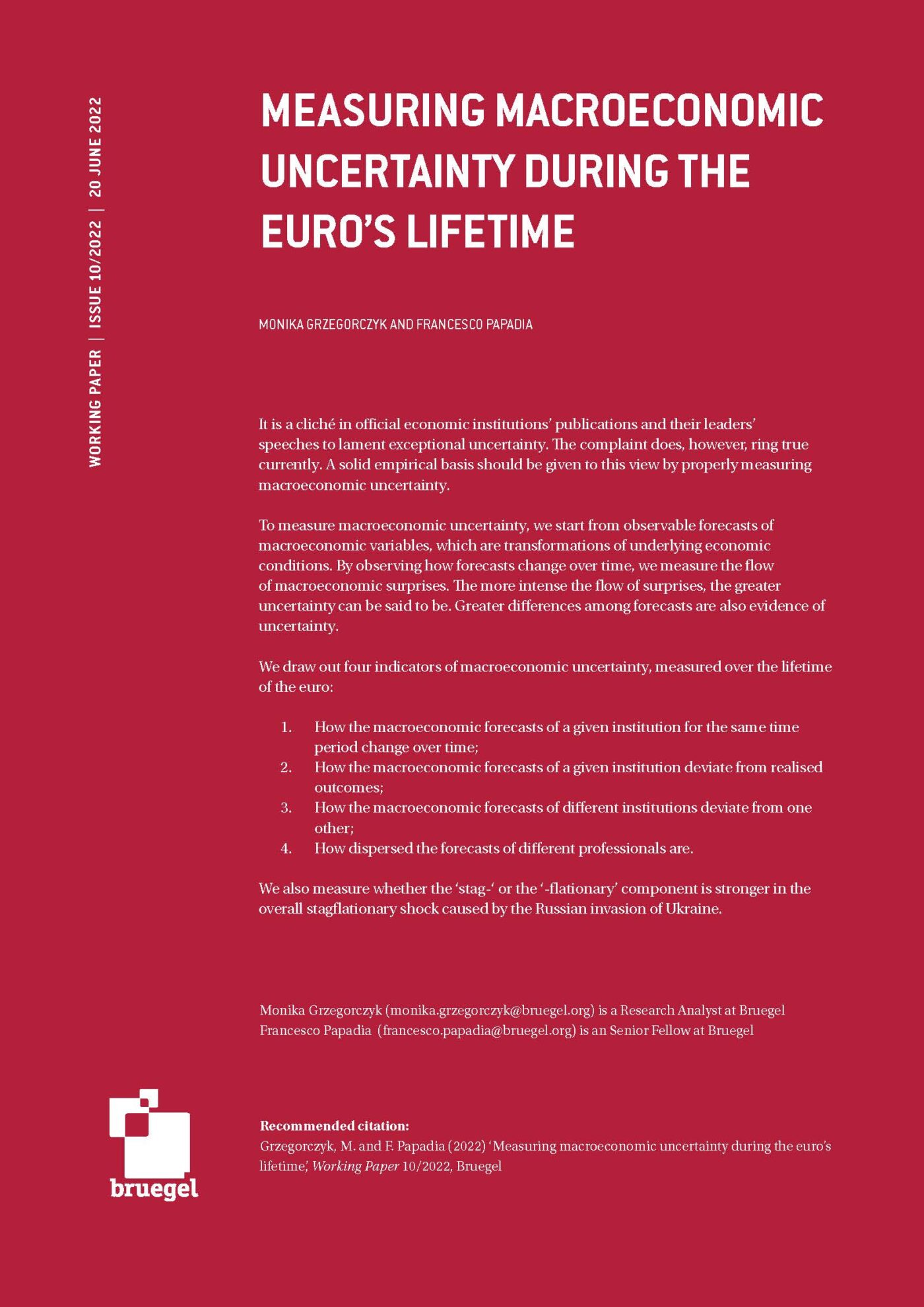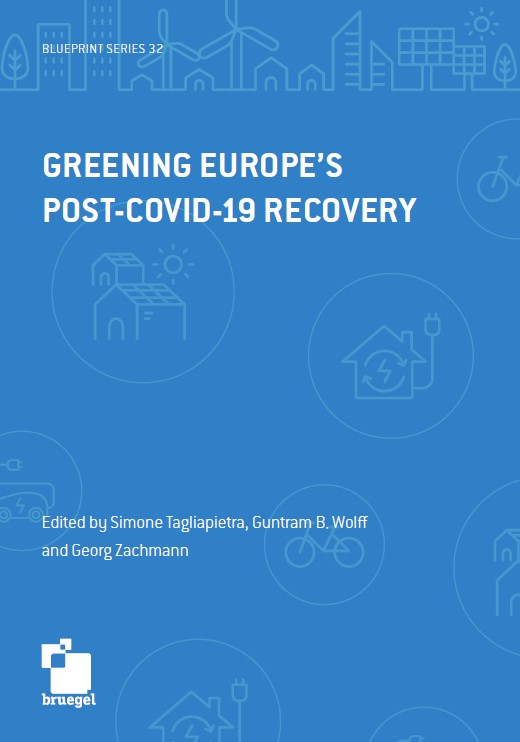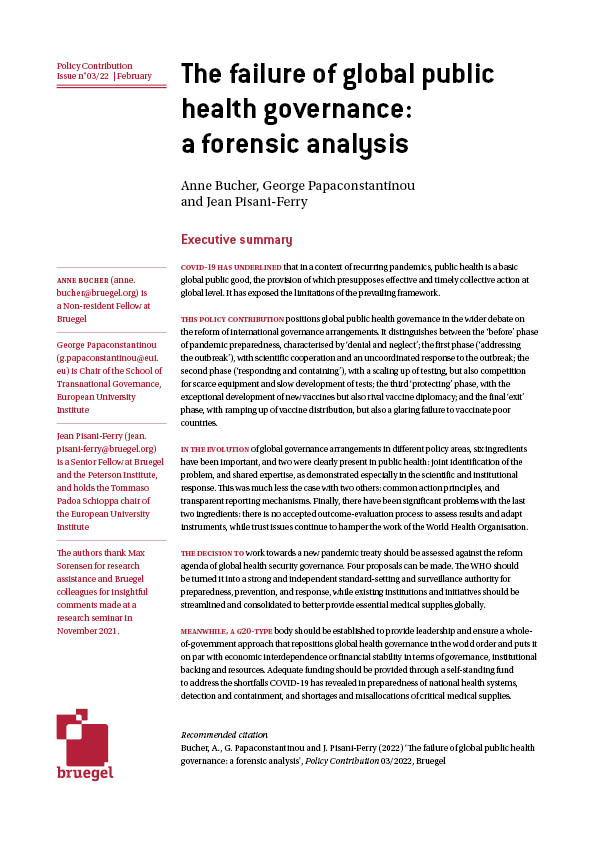Blog Post
Be bold now: coronavirus, the Eurogroup and fiscal safety nets
This blog post sketches two scenarios: one in which countries provide a large fiscal safety net to companies and another in which they do not. Both lead to similar debt-to-GDP ratios in 2021, but the safety net leads to a smaller and shorter recession and a quicker rebound. We then discuss how to fund a large response without fragmenting the euro area. Until the lockdowns end, such measures should be implemented.
After its meeting on 16 March, the Eurogroup came up with a strong statement, but it fell short of what will be needed to prevent lasting damage to our economies. A report just published by Imperial College’s COVID-19 team makes it clear: if we want to minimise the loss of lives, we need to supress the virus with ‘social’ distancing measures (ie physical distancing measures). The Imperial College report also makes clear that such measures might have to be in place to varying degrees until a vaccine is deployed, which could well take 12 or even 18 months, or at least until a significant part of the population is immune, which may happen earlier, or until other possibly digital ways to contain the virus are available.
Fortunately, physical distancing is not the same as social distancing. Many parts of our economy can continue to operate remotely via teleconferences and the like. Factories can continue to operate as long as physical distances are respected. But the fall in GDP will still be huge.
Investment bank JP Morgan estimates that quarterly euro-area GDP could fall by some 20% but it could be more or less. If the lock-down measures last for a year, we could easily be in for a 20% annual drop in GDP.
What should be the fiscal response? Most of the measures decided to date are liquidity measures. Such measures are crucial and helpful for a few weeks or months, but they cannot provide protection against the solvency issues that will inevitably arise in large parts of the corporate sector as their costs continue while their revenues collapse.
I look at two fiscal response scenarios. The first assumes that no fiscal transfers are made; the second assumes a 10% of 2019 GDP transfer. Furthermore, I assume that the transfers achieve two goals: they cushion the blow to GDP in 2020 and they help to preserve the productive structure, enabling the economy to revert in 2021 to 2019 potential.
Scenario 1: no fiscal transfers
| 2019 | 2020 | 2021 | |
| Debt | 80 | 80 | 80 |
| GDP | 100 | 80 | 90 |
| Ratio | 80 | 100 | 88.9 |
Scenario 2: major fiscal transfers of 10% of GDP
| 2019 | 2020 | 2021 | |
| Debt | 80 | 90 | 90 |
| GDP | 100 | 90 | 100 |
| Ratio | 80 | 100 | 90
|
As the very simple simulation shows, there is really no reason to worry about transferring 10% of GDP to the economy. Thanks to the faster rebound, the debt-to-GDP ratio will be essentially the same. But in the meantime, the recession will be much shorter and much less deep, leading to much less suffering among citizens.
These kinds of simulation are full of uncertainty and depend on major assumptions about the multipliers, for which we have no estimates since there has not been such a recession in the post-war period. But even with all the uncertainty, national governments and the European institutions must do everything to preserve as much productive capacity as possible, and to minimise the size of the unavoidable recession. It is time for a huge safety net to be given to the real economy.
The simulations also make it clear that debt sustainability really is not an issue. A 10 or even 20 percentage point increase in debt-to-GDP ratios does not raise any sustainability concerns as long as yields remain low.
The question then is what this means for the euro area. How can such a large fiscal transfer be funded without raising concerns about the integrity of the euro area? Essentially there are two options. In the first, a euro-area treasury would be established to issue debt and pass the money on to member states so they can give relief to companies. The problem with this solution is that we do not have a euro-area treasury. Of course, the European Stability Mechanism could be used, but that would entail a rather difficult legal process because the ESM treaty will need to be amended.
The second option is, in my view, much easier to implement and would be adequate for the situation: massively increase Quantitative Easing. The main problem for the European Central Bank in increasing its asset purchases is that its QE programme is constrained by its (self-imposed) issuer limit. The ECB is already quite close to the limit in several countries, in particular in the Netherlands and Germany. In the current setup, this implies that purchases would have to be stopped in a few months (or capital keys would have to be deviated from), especially if the volume of purchase is increased significantly. The most obvious answer to this, and a good signal for markets at the moment, would be to increase the issuer limit once again, at the very least for well-rated countries, so this policy can be used as much as needed in the current situation. The ECB/national central banks could thus continue buying sovereign bonds on the secondary bond markets according to capital keys.
The ECB should announce a QE programme, for example in the order of magnitude of 2.5% per quarter until the virus is combatted, ie 10% of euro-area GDP if it were to last a year. Such an programme should quickly end speculation. It would keep yields low and it would give the fiscal space to all countries to issue debt. Given the extraordinary size of the shock, it would be the appropriate monetary policy response to the depression. It would also be more comparable to what the Federal Reserve has announced. In fact, the meagre €120 billion that the ECB has so far announced is about 1% of euro-area GDP, clearly not enough.
The numbers are also well within what is possible. The Eurosystem currently holds €2130 billion of sovereign debt in its PSPP programme. Euro-area debt is currently about €10,000 billion. So some €8 trillion of euro-area debt is currently not held by the Eurosystem. The current ECB decisions would amount to purchases of some €300 billion until the end of the year (€120 billion newly decided and €180 billion from the old QE programme). Buying instead around €1200 billion up to the end of the year if necessary seems quantitatively feasible. Like in the QE programme, the ECB would not buy on the primary markets but on the secondary markets and would therefore respect the treaties. It would also not monetise debt but would really carry out a monetary policy operation to support the economy.
It is now up to the ECB and the Eurogroup to agree on big fiscal and monetary measures until the virus suppression-related lock downs end. Technically the measures are feasible. Fiscally they are sustainable. Economically they are needed to reduce the impact of the crisis. Will they be politically acceptable?
Republishing and referencing
Bruegel considers itself a public good and takes no institutional standpoint. Anyone is free to republish and/or quote this post without prior consent. Please provide a full reference, clearly stating Bruegel and the relevant author as the source, and include a prominent hyperlink to the original post.










